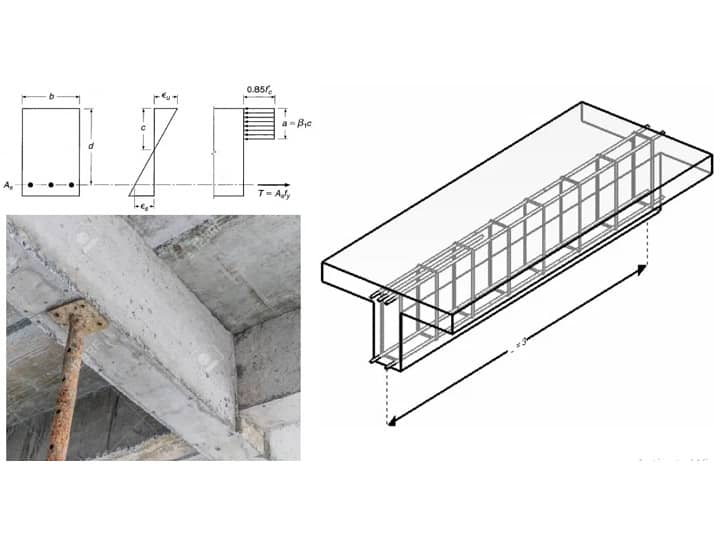Calculating Load-bearing Capacity of Existing Beams
Repair and renovate is a big part of the construction industry. An engineer should be able to figure out the abilities of the existing structural members as well as build new ones. Today, we will see how you can go about calculating load-bearing capacity of existing beams that have cracked, weakened, or weathered out.
The method of calculating load-bearing capacity of existing beams is based upon measuring the dimensions of the beam in question thoroughly and precisely. Then you have to figure out the strength of its concrete and the reinforcement area within it. But that's not all, you have to further estimate the forces acting on this structural member.
When you are done taking these measurements and evaluation, then comes the calculation part. Specifications and equations provided in building codes like ACI 318-19 and IS 456 will come in very useful in this matter. And only after that you can figure out how that load-bearing capacity of the reinforced concrete beam will affect your repair or renovation work. This is a method called reverse engineering.
Step-by-step instruction on how to calculate the load-bearing capacity of an existing beam
- A beam supports a slab, generally. Measure the span of the slab.
- Now measure the span of beam.
- Figure out the live load acting on the slab.
- This depends upon the purpose of the slab. E.g. The slab of an office floor should have 2.4 KN/m2 force acting on it. Look it up in building code tables.
- 4. Estimate the self-weight of the slab
- Don't forget to add dead loads like tiles and other finished work.
- Figure out how much of all that load is transferred to the beam in question.
- In case of a one-way slab, it's half, easily. For two-way slabs, it needs to be calculated by the tributary area.
- Now calculate the RCC beam's own loads.
- Dead load of a beam = its own self-weight.
- Self-weight of a beam = 24 KN/m3 x volume of beam.
- Total load = own dead load + any other loads on the beam transferred to it from slab or wall.
- Figure out the total load on the beam using the above data and the suitable load combinations provided in the applicable building code.
- Compute the applied moment (Mu) on the RCC beam in question.
- You can do this by either using required formula on the beams supports,
- Or, use finite element modeling.
- Precisely measure the dimensions of the beam.
- Find out everything about the steel bars provided in the beam.
- Can be found in the building's design detail, if available.
- If not, non-destructive tools can be used to scan the beam and find out.
- If possible, you can break up a small sample from another similar beam that is not under use and see inside.
- Ultimately, you need the size of the steel bars inside the beam, and their numbers.
- Calculate area of reinforcement next.
- Use above data to figure out:
- The depth of the rectangular stress block
- The height of the neutral axis
- Final step: compute the design moment of the beam (Md).
- If Md is greater than Mu, then the beam is fine. If not, it needs to be fixed or supported.
So, of course, the repair or renovation work that you need to do on an existing beam depends clearly upon these two factors - the design moment and the applied moment. If you need to rehabilitate the RCC beam in question, that is, if Mu is greater than Md, then you have to provide extra supports to the beam, or fatten it up - or even both, if needed.
Example of load-bearing capacity of existing RCC beam
For example, if we have the following data:
- Beam dimensions: 250 mm X 380 mm X 350 mm
- Slab is one-way, 100 mm.
- Steel bars yield strength is 280 MPa, and concrete compressive strength is 17 MPa.
Then, using the above methods, we will find out that:
- Md is 64.61 KN-m
- Mu is 93.218 KN-m
Since Mu is clearly much greater than Md, this beam requires immediate repair and rehabilitation!
